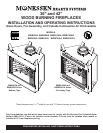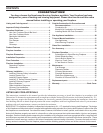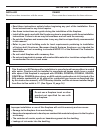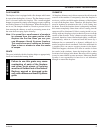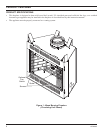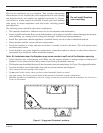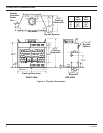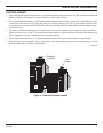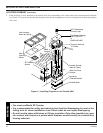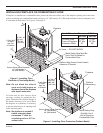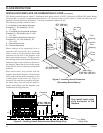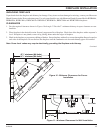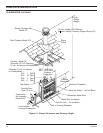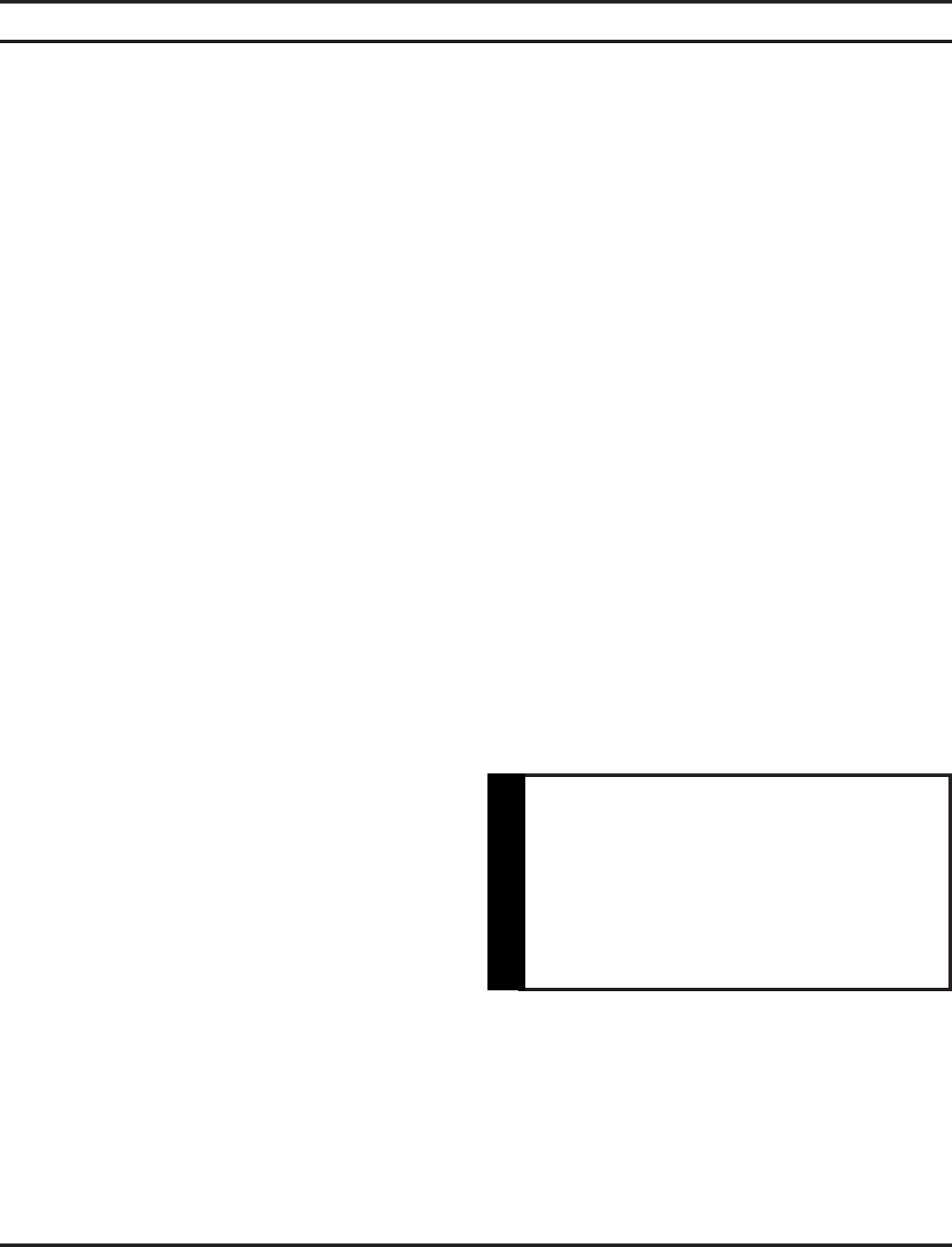
4 61D0006
OPERATION GUIDELINES
HOW YOUR FIREPLACE SHOULD BE USED
This fireplace is intended for supplemental heating only and
is not intended for use as a primary heating system.
This fireplace is designed to sit directly on a combustible
floor. The fireplace must be installed with clearances to com-
bustible building materials as specified by this manual. Only
parts manufactured by Monessen Hearth Systems and labeled
for use with this fireplace should be used in the installation
of the fireplace except for special roof flashings that may be
fabricated locally. The use of improper parts in the installation
can be hazardous and voids the warranty offered by Monessen
Hearth Systems.
This fireplace is designed to burn solid wood fuel (wood),
UL- classified processed solid fuel fire logs, or a certified
decorative gas appliance may be installed in the fireplace as
described later by this instruction manual.
This fireplace is not designed to burn coal, unplumbed liquid
fuels, unplumbed gaseous fuels or household refuse. Any
attempt to burn these fuels in the fireplace can be hazard
-
ous.
HOW YOUR FIREPLACE WORKS
As wood is burned in the fireplace, room air entering the
fireplace is circulated around the fireplace firebox. This air
circulation protects the firebox from overheating. Air circula-
tion through the fireplace must not be blocked or restricted
in any manner. Blocking or restricting air circulation through
the fireplace can cause a fire hazard.
RESIDENTIAL INSTALLATION
In residential type installation, an AK4 outside combustion air
kit may be connected to the left side of the fireplace to allow
outside air to enter the firebox through a dampered opening in
that side of the fireplace. This outside combustion air feature
reduces the room air used for combustion and prevents exces
-
sive heat loss from the room. When the fireplace is in use,
the fireplaceʼs “outside combustion air” damper connected
to an AK4 may be opened to allow air from outside to enter
the fireplace firebox. When the fireplace is not in use, the
“outside combustion air” damper should be closed to prevent
cold air from entering the firebox. An “outside combustion
air” damper is open when its control lever is up and closed
when its control lever is down. A control lever for the outside
combustion airdamper is located inside the firebox near the top
of the side firebrick on the left side of the fireplace. The design
of the fireplace allows the routing of the combustion air duct
downward or horizontally to obtain the outside combustion
air; this permits flexibility in planning your installation. See
Figures 24 thru 27 and their instructions for typical installa-
tion of outside combustion air kits. Review the precautions
and recommendations in this manual pertaining to outside
combustion air.
Note: Outside air for combustion is optional in
residential type installations unless required
by local codes. Outside air for combustion
it is mandatory in manufactured home
installations. Use an AK6 outside combustion
air kit in manufactured home installations,
instead of the AK4 offered for residential type
installations.
GLASS DOORS
Glass doors (models GD36BA, GD36PBA, GD36SSA,
GD42BA, GD42PBA and GD42SSA by Monessen Hearth
Systems) may be installed to receive the maximum benefit
from your fireplace. For large fires, the maximum heating
benefit from the fireplace will be obtained with the doors open
due to the high amount of radiant heat being emitted out of
the front opening of the fireplace. With a small fire, or before
retiring in the evenings, it is best to operate the fireplace with
the doors closed to prevent excessive room air from being
drawn up the chimney. When the doors are open, the mesh
screens should be closed to help keep burning embers from
popping out of the firebox.
Note: Glass doors are mandatory on fireplaces
installed in manufactured homes.
Fireplaces equipped with glass doors
should be operated only with the
glass doors fully open or fully closed.
If doors are left partly open, gas and
flame may be drawn out of the fireplace
opening, creating risks of both fire and
smoke.
WARNING



